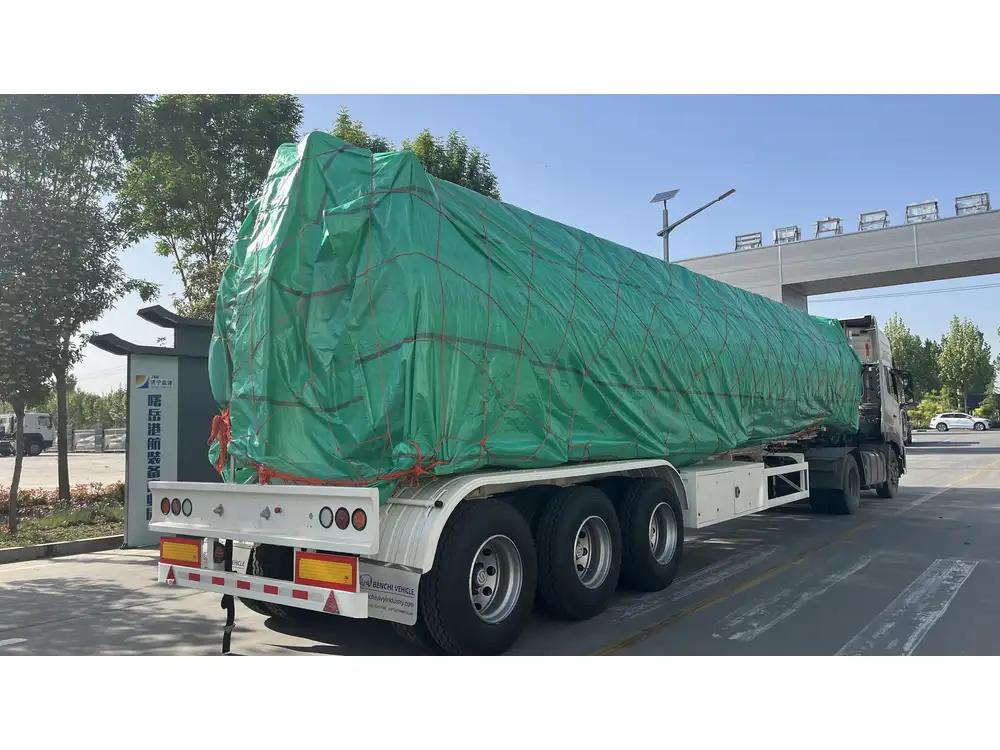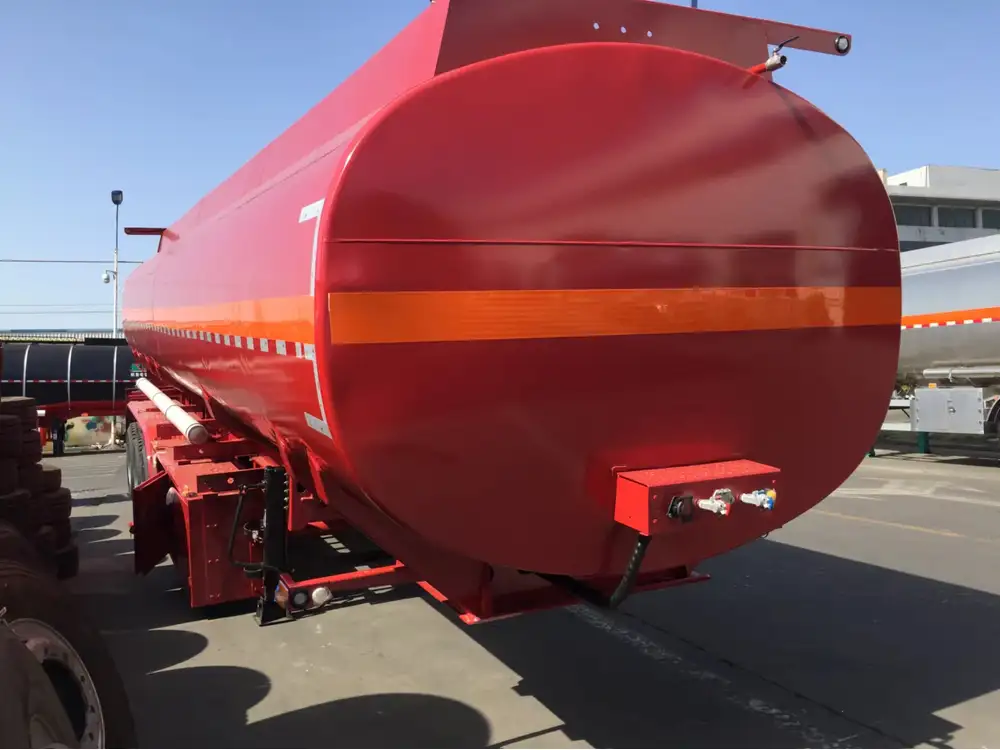Dump trailers serve as invaluable tools for transporting bulk materials, debris, and equipment efficiently. Many DIY enthusiasts seek to construct a homemade dump trailer, marrying functionality with cost-effectiveness. This guide provides a deep dive into materials, design considerations, and step-by-step construction methods for building a durable, reliable, and efficient homemade dump trailer.
Understanding the Basic Components of a Dump Trailer
Before embarking on the construction journey, familiarity with the primary components of a dump trailer is essential. A typical dump trailer consists of the following parts:
| Component | Description |
|---|---|
| Frame | The skeleton structure that supports the trailer, often made of steel tubing. |
| Bed | The flat surface where materials are loaded, typically constructed from steel or plywood. |
| Hydraulic System | The mechanism that raises and lowers the bed for dumping materials. Typically includes a hydraulic cylinder and pump. |
| Axles | Components that allow the trailer to roll, usually ranging from single to tandem axles, depending on load capacity. |
| Wheels and Tires | Support the weight of the trailer and cargo, important for stability and safety. |
| Tongue | The part that attaches the trailer to the towing vehicle, providing pivotal connection and stability. |
| Braking System | Safety mechanism to control trailer movement. Generally includes hydraulic or electric brakes. |
Materials Required for Building a Dump Trailer
The choice of materials greatly affects the durability and effectiveness of the finished product. Here’s a list of necessary materials:
- Steel Tubing – For the frame and supports.
- Sheet Metal or Plywood – For constructing the bed.
- Axles and Wheels – Depending on the design specifications.
- Hydraulic Cylinder and Pump – To create the dumping mechanism.
- Paint and Primer – For weatherproofing and aesthetics.
- Fasteners – High-strength bolts, nuts, and washers to ensure secure connections.

Step-by-Step Guide to Building Your Own Dump Trailer
Step 1: Planning and Designing
Setting up a detailed plan is crucial before beginning construction. Draft a blueprint that outlines the trailer dimensions, weight capacity, and materials to be utilized.
- Dimensions: Common sizes vary; a capacity of 2,000 to 5,000 pounds is typical.
- Weight Distribution: Ensure the design promotes balanced weight during transport.
- Hydraulic Lift Mechanism: Determine how you will implement the hydraulic system to lift the bed.
Step 2: Constructing the Frame
Using the engineered plan, commence by constructing the frame.
- Cut the Steel Tubing: Use a band saw or cutter to cut the tubing to the required lengths.
- Weld the Frame Together: Employ a MIG or TIG welder to assemble the frame, ensuring all joints are well-fused.
- Add Cross Bracing: Incorporate additional steel tubing for stability, particularly if you anticipate heavy loads.

Step 3: Building the Bed
Once the frame is complete, it’s time to construct the bed, the area where you will load materials.
- Cut Sheet Metal or Plywood: Depending on your choice, cut these materials to fit the frame.
- Secure to Frame: Use heavy-duty bolts to attach the bed material securely onto the frame. Ensure the surface is even, preventing materials from shifting.
Step 4: Installing the Hydraulic System
The hydraulic lift system is what distinguishes a dump trailer from a standard trailer.
- Mount the Hydraulic Cylinder: Position the hydraulic cylinder with its base welded to the trailer frame. It must be aligned vertically for optimal function.
- Fix the Pivot Point: Attach the other end of the hydraulic cylinder to the dumping bed, ensuring it can pivot when raised.
- Connect Hydraulic Lines: Insert hydraulic lines from the hydraulic pump to the cylinder, ensuring there are no leaks. Test before permanent installation.
Step 5: Attaching the Axles and Wheels
Once your trailer frame and bed are complete, it’s time to attach the axles and wheels.
- Prepare the Axles: Depending on your design, you may choose to use a single or tandem axle. Ensure crucial measurements are taken from the center of the trailer to maintain balance.
- Install Wheel Hubs and Tires: Attach wheel hubs securely, following manufacturer specifications. Mount the tires and ensure they spin freely.

Step 6: Constructing the Tongue
The tongue is crucial for coupling the trailer to a tow vehicle.
- Cut the Tongue Material: Typically, a piece of steel tubing or channel iron. The length should allow for proper turning radius.
- Beech to Frame: Weld the tongue securely to the front of the trailer frame, creating a strong connection.
Step 7: Finalizing Safety Features
Before your trailer is roadworthy, consider the safety features to ensure it meets legal requirements.
- Install the Braking System: Depending on weight capacity, install either electric or hydraulic brakes. Ensure lines are properly installed and functional.
- Add Reflectors and Lights: Compliance with local regulations requires proper lighting. LED lights provide durability and visibility.
- Test Load Capacity: After completion, do a test run with varying loads to ensure performance meets expectations.
Maintenance and Safety Tips for Your Homemade Dump Trailer
After investing substantial effort into building your dump trailer, it is crucial to maintain it for longevity and safety. Here are few maintenance tips:
| Maintenance Task | Frequency | Checklist |
|---|---|---|
| Brake Inspection | Every 6 months | Check fluid levels, adjust as needed. |
| Tire Maintenance | Monthly | Inspect for wear, check pressure. |
| Lubrication | Monthly | Grease moving parts, check axle bearings. |
| Frame Inspection | Biannually | Look for rust or damage, treat as needed. |
| Hydraulic System | Quarterly | Inspect for leaks, replace seals if necessary. |

Advantages of Having a Homemade Dump Trailer
Constructing a dump trailer offers several compelling advantages:
- Cost-Effective: Building your own can save thousands compared to purchasing a commercial unit.
- Customization: Tailor dimensions and features specifically to your needs.
- Quality Control: Take pride in crafting a high-quality product that stands up to your standards.
- DIY Satisfaction: Enjoy the satisfaction that comes from creating something useful from scratch.
Potential Issues and Solutions
Problem: Hydraulic System Failure
Solution: Regular maintenance and inspections can prevent most hydraulic issues. Always check for leaks and ensure the pump is functioning correctly before each use.

Problem: Unstable Load
Solution: Distribute weight evenly on the trailer bed. Utilize tie-down straps for added security.
Problem: Difficulty in Towing
Solution: Ensure the tongue length is appropriate for your towing vehicle for optimal turning capability. Adjust weight distribution for stability.
Conclusion
Building your own dump trailer can be a rewarding endeavor, providing significant utility and customization. By following this detailed guide, you equip yourself with the necessary knowledge to construct a reliable and efficient homemade dump trailer. Remember to prioritize safety and maintenance to ensure your trailer remains in top working condition through its lifespan. Enjoy the freedom and satisfaction of crafting your very own dump trailer, tailored precisely to your needs.

Invitation for Feedback and Interaction
We welcome any questions, comments, or experiences you would like to share about building your dump trailer. Engaging with fellow DIY enthusiasts can provide a wealth of knowledge and inspiration for your upcoming projects!



